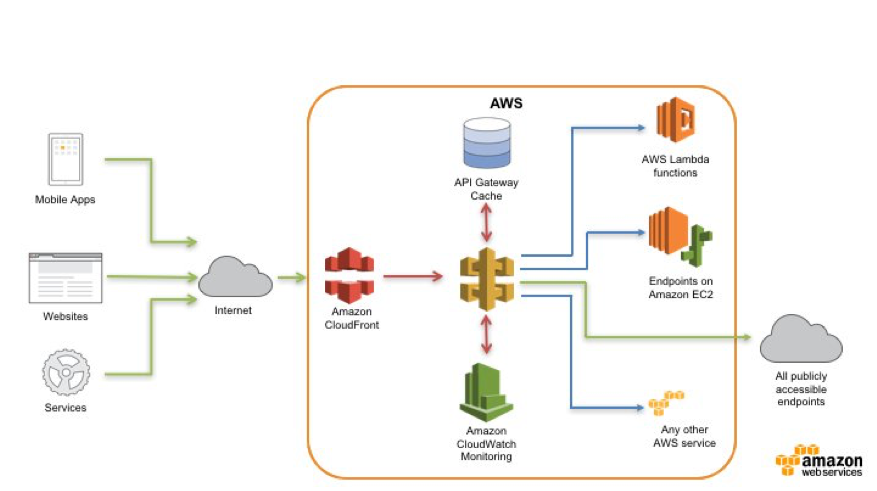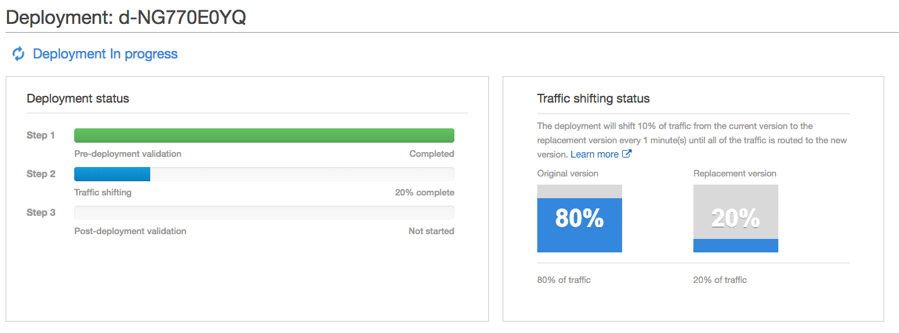AWS Compute Blog
Control access to your APIs using Amazon API Gateway resource policies
This post courtesy of Tapodipta Ghosh, AWS Solutions Architect Amazon API Gateway provides you with a simple, flexible, secure, and fully managed service that lets you focus on building core business services. API Gateway supports multiple mechanisms of access control using AWS Identity and Access Management (IAM), AWS Lambda authorizers, and Amazon Cognito. You may […]
Introducing Amazon API Gateway Private Endpoints
One of the biggest trends in application development today is the use of APIs to power the backend technologies supporting a product. Increasingly, the way mobile, IoT, web applications, or internal services talk to each other and to application frontends is using some API interface. Alongside this trend of building API-powered applications is the move […]
Protecting your API using Amazon API Gateway and AWS WAF — Part I
This post courtesy of Thiago Morais, AWS Solutions Architect When you build web applications or expose any data externally, you probably look for a platform where you can build highly scalable, secure, and robust REST APIs. As APIs are publicly exposed, there are a number of best practices for providing a secure mechanism to consumers […]
Extending Amazon Linux 2 with EPEL and Let’s Encrypt
This post courtesy of Jeff Levine Solutions Architect for Amazon Web Services Amazon Linux 2 is the next generation of Amazon Linux, a Linux server operating system from Amazon Web Services (AWS). Amazon Linux 2 offers a high-performance Linux environment suitable for organizations of all sizes. It supports applications ranging from small websites to enterprise-class, […]
Implementing safe AWS Lambda deployments with AWS CodeDeploy
This post courtesy of George Mao, AWS Senior Serverless Specialist – Solutions Architect AWS Lambda and AWS CodeDeploy recently made it possible to automatically shift incoming traffic between two function versions based on a preconfigured rollout strategy. This new feature allows you to gradually shift traffic to the new function. If there are any issues […]
ICYMI: Serverless Q1 2018
This post courtesy of Paul Johnston, AWS Senior Developer Advocate – Serverless Welcome to the first edition of the AWS Serverless ICYMI (In case you missed it) quarterly recap! Every quarter we’ll share all of the most recent product launches, feature enhancements, blog posts, webinars, Twitch live streams, and other interesting things that you might have […]
Using AWS Lambda and Amazon Comprehend for sentiment analysis
This post courtesy of Giedrius Praspaliauskas, AWS Solutions Architect Even with best IVR systems, customers get frustrated. What if you knew that 10 callers in your Amazon Connect contact flow were likely to say “Agent!” in frustration in the next 30 seconds? Would you like to get to them before that happens? What if your […]
Node.js 8.10 runtime now available in AWS Lambda
This post courtesy of Ed Lima, AWS Solutions Architect We are excited to announce that you can now develop your AWS Lambda functions using the Node.js 8.10 runtime, which is the current Long Term Support (LTS) version of Node.js. Start using this new version today by specifying a runtime parameter value of nodejs8.10 when creating or […]
Managing Cross-Account Serverless Microservices
This post courtesy of Michael Edge, Sr. Cloud Architect – AWS Professional Services Applications built using a microservices architecture typically result in a number of independent, loosely coupled microservices communicating with each other, synchronously via their APIs and asynchronously via events. These microservices are often owned by different product teams, and these teams may segregate their […]
Applying the Twelve-Factor App Methodology to Serverless Applications
The Twelve-Factor App methodology is twelve best practices for building modern, cloud-native applications. With guidance on things like configuration, deployment, runtime, and multiple service communication, the Twelve-Factor model prescribes best practices that apply to a diverse number of use cases, from web applications and APIs to data processing applications. Although serverless computing and AWS Lambda […]










